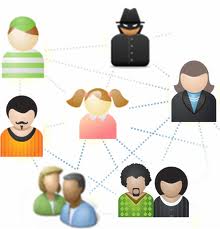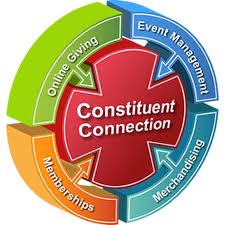 Yesterday, I wrote about the power of donor database software in a post titled “What can’t your donor database do?” In that post, I marveled at the availability of powerful tools such as WealthEngine and Blackbaud’s Target Analytics that have the capability of interfacing with your donor database systems. Of course, these service cost money and for a number of non-profit organizations with scarce resources, sophisticated prospect research can feel out-of-reach.
Yesterday, I wrote about the power of donor database software in a post titled “What can’t your donor database do?” In that post, I marveled at the availability of powerful tools such as WealthEngine and Blackbaud’s Target Analytics that have the capability of interfacing with your donor database systems. Of course, these service cost money and for a number of non-profit organizations with scarce resources, sophisticated prospect research can feel out-of-reach.
The reality is that it doesn’t have to be that way. Much of the information that data mining companies provide comes from public sources of data. All your organization has to do is dedicate a little staff time to this project, and you’ll be able to develop fairly complete prospect/donor profiles.
To test this hypothesis, I selected one donor from a local non-profit organization who I don’t know very well and used online resources to find out as much as I could on him. In order to protect the innocent, I will refer to this donor as “John Doe” throughout today’s blog post. In completing my prospecting work, I used a number of free resources that are available to everyone with an internet connection.
Google. It is amazing what you can find out about a person using Google. I typed in my prospect’s name using quotation marks and plus signs. It looked exactly like this:
“John Doe” + Elgin + Illinois
Using the quotation marks and plus signs helps narrow the Google search and improves the search results. With just that simple search, I found the following information on this prospect:
- Place of employment
- Address of workplace
- Phone number of workplace
- Work email address
- Job title
- Number of employees in workplace
- Company sales volume
- Last five employers
- Other non-profit boards upon which they serve
 Anywho.com or 411.com or Beenverified.com or Intellius.com. These types of sites can help you secure information like home address, phone number, estimated age, and names of relatives. You can also find information on previous home addresses, which gives you more to search on Google.
Anywho.com or 411.com or Beenverified.com or Intellius.com. These types of sites can help you secure information like home address, phone number, estimated age, and names of relatives. You can also find information on previous home addresses, which gives you more to search on Google.
Zillow.com. Once I found this prospect’s home address, I went to zillow.com and found out what those people believe his house value. (If you are feeling brave, you can check on your house’s value. I am feeling a little ill after doing exactly that. Apparently, out house has dropped $92,000 in value since we purchased it six years ago. Ugh!)
Sec.gov/edgar.shtml. Publicly traded companies are required by the federal government to disclose a lot of information. I went to this site to learn more about the company for which my prospect works. I also clicked around to see if he is a significant investor or owns large chunks of any publicly traded companies. Unfortunately, he did not.
Guidestar.org. Non-profit charities are also required by the federal government to disclose a lot of information. So, I looked up the 990 forms of the non-profit organizations for which my prospect sits on their boards. I also did a search on my prospect’s name to see if there are any foundations that have been set-up in his name or his family’s name.
 Facebook. Even though this prospect and I are not “Facebook friends,” many people don’t understand this social network’s privacy policies. As a result, a number of you have more personal information hanging out there than you care to know about. In this instance, I found out where my prospect graduated from high school. So, now I know where he grew up. I also found out where they went to college and what they studied.
Facebook. Even though this prospect and I are not “Facebook friends,” many people don’t understand this social network’s privacy policies. As a result, a number of you have more personal information hanging out there than you care to know about. In this instance, I found out where my prospect graduated from high school. So, now I know where he grew up. I also found out where they went to college and what they studied.
LinkedIn. It is amazing to me what people post on their LinkedIn profiles. Unfortunately, I couldn’t find my prospect on this social network. However, if I had, then I probably would’ve had access to information such as: employer, past employers, job functions/responsibilities, interests/groups, and possibly even his birthday. If I was “linked” with the prospect, I would’ve likely been able to view their network of friends and business associates.
So, the point I am driving at is that you don’t need lots of money to afford the services of data mining companies because there is already a lot of information out there on your prospects and donors. All you need to do is find time to gather the information and enter it into your donor database.
Ohhhhhh . . . I can already hear many of you saying that your organization is too thinly stretched and don’t have time. OK, I get it. I’ve been there and done that. However, how many prospects and donors do you really need this level of detailed data on? For small and mid-size non-profit organizations, it might only be your Top 10, 25, 50 or 100 donors. If you set aside a few hours each week, you will have detailed donor profiles for your most important donors in a very short period of time.
Ohhhhhh . . . I can also hear many of you saying that this feels like an invasion of privacy. Or maybe stalking? I also know some of you doubt the need for this level of detail.
 Let me simply end by saying, fundraising is all about relationships. The more you know about your prospects/donors, the more likely you are to deepen those relationships, connect with them, and raise money for your mission. While this might not be necessary for “transactional fundraising” programs that rely on special events and annual campaigns, it is an absolute necessity once you start moving toward donor-centered fundraising and development of a major gifts program.
Let me simply end by saying, fundraising is all about relationships. The more you know about your prospects/donors, the more likely you are to deepen those relationships, connect with them, and raise money for your mission. While this might not be necessary for “transactional fundraising” programs that rely on special events and annual campaigns, it is an absolute necessity once you start moving toward donor-centered fundraising and development of a major gifts program.
Still not convinced? Birthday and age information impacts planned giving strategies. Home value is one data point that can contribute to assessing wealth and philanthropic capacity. Understanding a prospect/donor’s social network, friends, and professional relationships will help you with volunteer solicitor assignment strategies.
Online prospecting work will never replace good old fashion relationship building. It is amazing what people can and will share over a cup of coffee, but doing your homework by using free online tools or paying data mining companies certainly helps and it makes your resource development efforts a little easier.
Does your organization use fee-based data mining companies like WealthEngine to do donor screening or compilation of donor profiles? If so, what has been your experience? Have you used some of the aforementioned free online tools? If so, please share your experiences and thoughts by using the comment box below.
Here’s to your health!
Erik Anderson
Founder & President, The Healthy Non-Profit LLC
www.thehealthynonprofit.com
erik@thehealthynonprofit.com
http://twitter.com/#!/eanderson847
http://www.facebook.com/eanderson847
http://www.linkedin.com/in/erikanderson847



